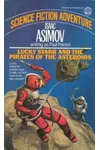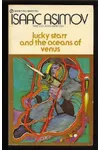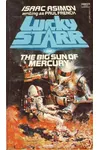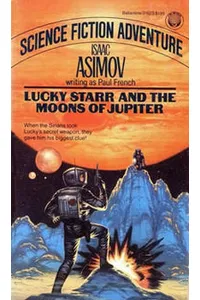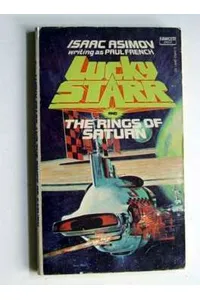Step into the thrilling cosmos of Lucky Starr, where a young space ranger zips across the solar system, unraveling interplanetary mysteries with wit and scientific savvy! Penned by sci-fi legend Isaac Asimov under the pseudonym Paul French, the Lucky Starr series is a six-book adventure that captures the optimism and wonder of 1950s space-age dreams. Perfect for young readers and adults craving nostalgic fun, these novels blend action, mystery, and hard science fiction with a dash of Lone Ranger flair.
How Lucky Starr Began
In 1951, Asimov was approached by Doubleday’s science fiction editor Walter I. Bradbury and agent Frederik Pohl with a bold idea: write a juvenile sci-fi novel to fuel a potential TV series. Wary of television’s tendency to mangle good stories, Asimov adopted the pen name Paul French to distance himself from any flop. He kicked off the series with David Starr, Space Ranger in 1952, but when TV plans fizzled, he embraced the series, weaving in his signature Three Laws of Robotics and later reclaiming authorship under his own name.
The Heart of Lucky Starr
The series follows David 'Lucky' Starr, a sharp-minded councilman of Earth’s Council of Science, and his pint-sized sidekick, John Bigman Jones, as they tackle cosmic crimes. In David Starr, Space Ranger, Lucky investigates a poisoning plot on Mars, blending detective work with Martian intrigue. Lucky Starr and the Oceans of Venus dives into an underwater mystery on a vividly imagined Venus, while Lucky Starr and the Big Sun of Mercury pits Lucky against sabotage near a scorching star. The final book, Lucky Starr and the Rings of Saturn, escalates to a Cold War-inspired clash with the Sirian empire.
These tales shine with Asimov’s knack for grounding wild adventures in scientific curiosity. Themes of heroism, logic, and human resilience pulse through the series, set against a colonized solar system where planets brim with exotic life and danger. Though the science—think oceans on Venus or ammonia rivers on Io—is dated, Asimov’s prefaces in later editions charmingly acknowledge these quirks, inviting readers to revel in the retro vibe.
Why Lucky Starr Resonates
Despite its juvenile roots, Lucky Starr’s blend of mystery and adventure captivates readers of all ages. Fans on platforms like Goodreads praise its fast-paced plots and Sherlock Holmes-meets-space-opera charm. The series sparked young readers’ love for sci-fi, with some crediting it as a gateway to Asimov’s heavier works like Foundation. Its influence lingers in the enduring appeal of optimistic, science-driven heroes, echoing in modern space adventures.
- Publication Years: 1952–1958
- Number of Books: Six
- Original Publisher: Doubleday
- Pseudonym: Paul French (later credited to Isaac Asimov)
About Lucky Starr
Ready to blast off with a classic? Grab David Starr, Space Ranger and dive into Lucky Starr’s galaxy of adventure, where science and heroism collide!

